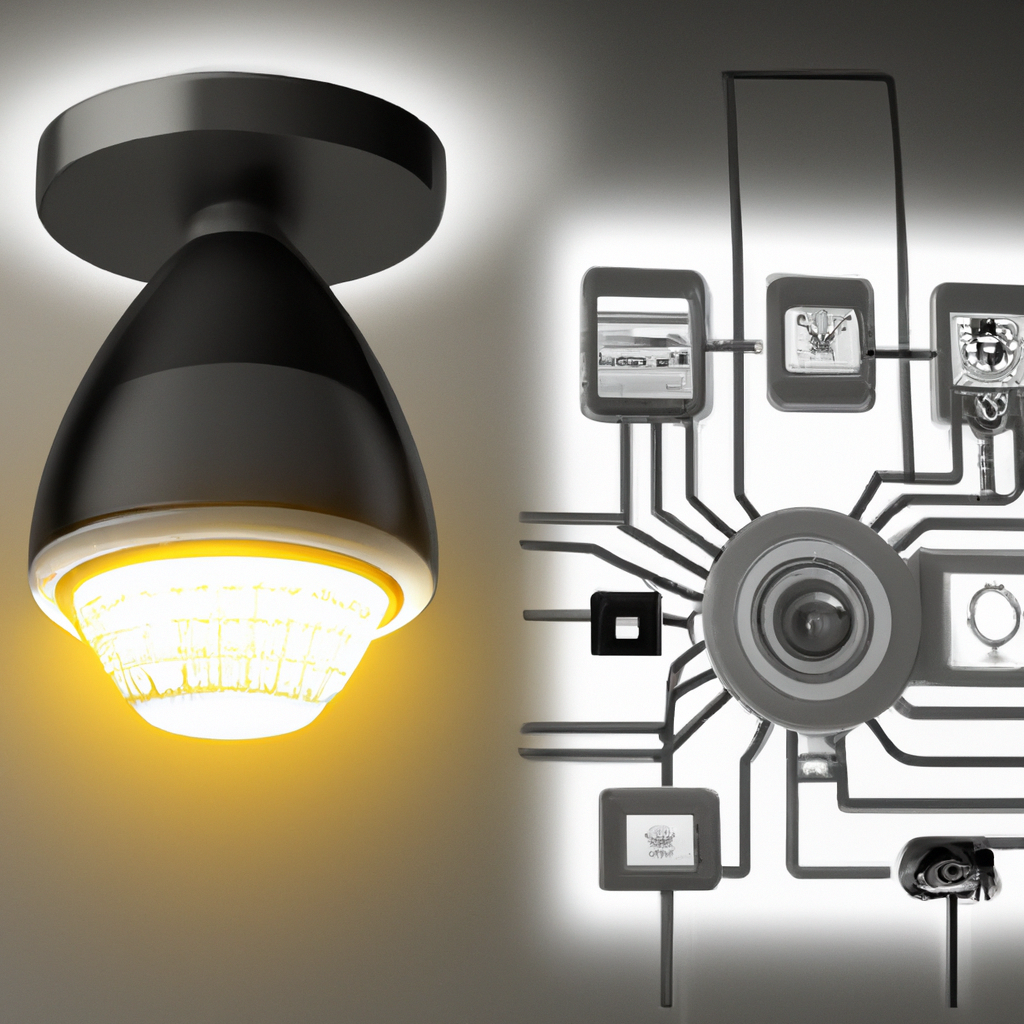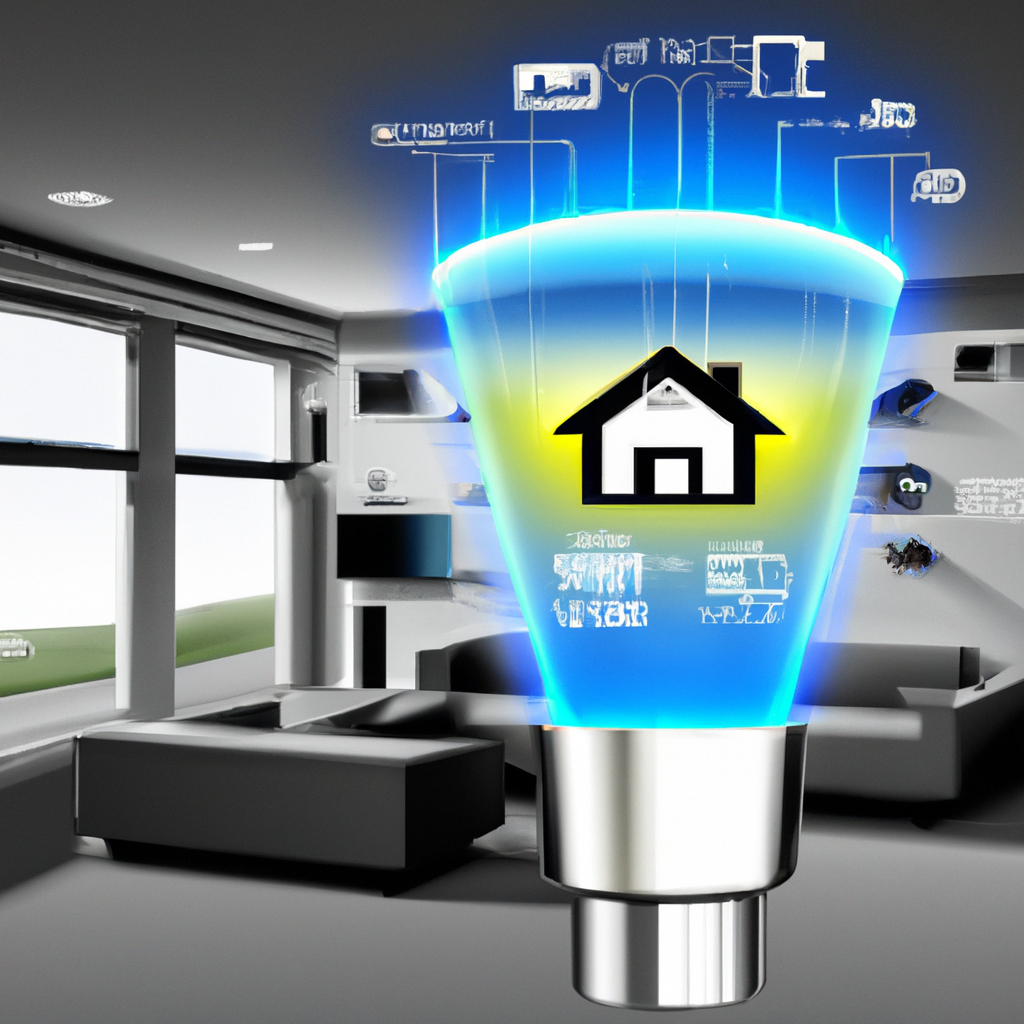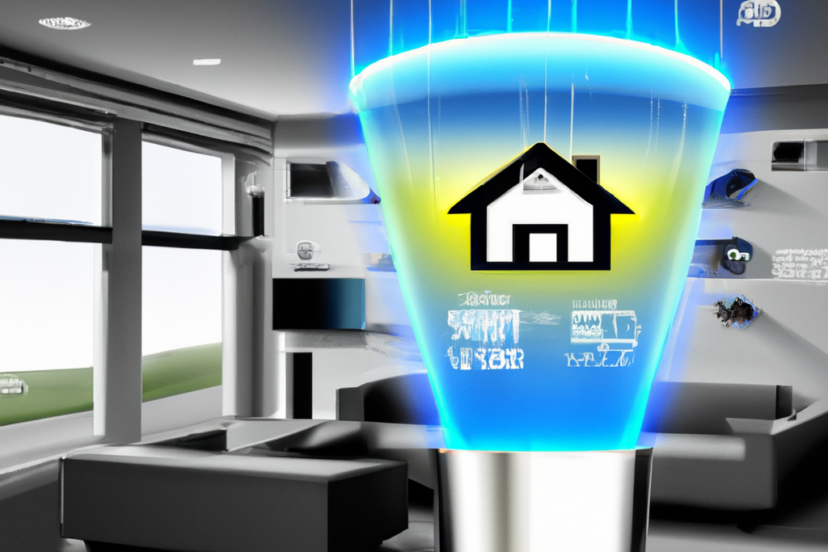Smart Home Lighting: Integrating Automation And Voice-Controlled Systems
Imagine walking into your home and with just a simple voice command, your lights turn on, setting the perfect ambiance for your evening. With the advancement in technology, smart home lighting has become more accessible and convenient than ever before. This article explores the integration of automation and voice-controlled systems in smart home lighting, showcasing how this innovation can effortlessly enhance your living experience. From controlling the intensity and color of your lights to setting schedules and creating personalized lighting scenes, the possibilities are endless. Say goodbye to fumbling for switches and hello to a truly intelligent and efficient lighting system. Discover how smart home lighting can transform your home into a truly futuristic and personalized space.
Smart Home Lighting: Integrating Automation And Voice-Controlled Systems
With the rise of smart technology, our homes are becoming more connected and efficient than ever before. One area that has seen significant advancements is smart home lighting. By integrating automation and voice-controlled systems, smart home lighting offers a range of benefits that make our lives easier and more convenient. In this article, we will explore the advantages of smart home lighting, the different types of systems available, and the integration options that allow for seamless control. We will also discuss considerations for choosing the right system, the installation process, tips for using smart home lighting effectively, and the future developments we can expect in this exciting field.

Benefits of Smart Home Lighting
- Energy Efficiency
One of the primary benefits of smart home lighting is its energy efficiency. Smart lighting systems utilize LED technology, which consumes significantly less energy than traditional incandescent bulbs. Additionally, these systems allow for precise control over each individual light, enabling users to adjust brightness and create lighting schedules. By optimizing energy usage and reducing unnecessary lighting, smart home lighting can help lower electricity bills and reduce our environmental impact.
- Convenience
Smart home lighting adds a new level of convenience to our homes. With automation features, you can program your lights to turn on or off at specific times or when certain conditions are met, such as when you enter or leave a room. This eliminates the need for manual control, making it easy to create the perfect lighting atmosphere without lifting a finger. Additionally, voice-controlled systems allow for hands-free operation, enabling you to control your lights simply by speaking commands.
- Security
Another advantage of smart home lighting is enhanced security. With the ability to control your lights remotely, you can give the impression that someone is home even when you’re away. This can deter potential burglars and provide peace of mind while you’re traveling. Additionally, motion sensors can automatically turn on lights when any movement is detected, ensuring that dark areas are illuminated and improving overall safety in your home.
- Personalization
Smart home lighting allows for a high level of personalization. With adjustable color temperatures and brightness levels, you can create the perfect ambiance for any occasion. Whether you prefer warm, cozy lighting for a relaxing evening or bright, cool lighting for a productive workspace, smart lighting systems can adapt to your preferences. You can also create custom lighting scenes that combine different lights and settings to set the mood effortlessly.
Types of Smart Home Lighting Systems
When choosing a smart home lighting system, it’s essential to understand the different types available. Here are three common types:
- WiFi-Based Systems
WiFi-based systems are the most common type of smart home lighting system. They connect directly to your existing WiFi network, allowing for easy control through a smartphone app or voice assistants like Alexa or Google Assistant. These systems offer a wide range of features and are compatible with a variety of smart devices, making them a versatile option for most homeowners.
- Zigbee and Z-Wave Systems
Zigbee and Z-Wave are two wireless communication protocols specifically designed for smart home devices. These systems create a mesh network, where devices communicate with each other and transmit signals to a central hub. This makes them highly reliable and unaffected by WiFi network congestion. Zigbee and Z-Wave systems are known for their range and can support a large number of devices, making them ideal for larger homes or those with multiple smart devices.
- Bluetooth-Based Systems
Bluetooth-based smart home lighting systems connect directly to your smartphone or tablet using Bluetooth technology. These systems offer a simple and straightforward setup process since they don’t require connection to a WiFi network or additional hub. However, their range is limited, and they may not support as many devices compared to WiFi or Zigbee/Z-Wave systems. Bluetooth-based systems are best suited for smaller spaces or those looking for a budget-friendly option.
Integration of Automation and Voice-Controlled Systems
To achieve seamless control over smart home lighting, integrating automation and voice-controlled systems is crucial. Here are four key components of integration:
- Voice Control Devices
Voice control devices, such as Amazon Echo or Google Home, allow you to control your smart home lighting using voice commands. By simply saying phrases like “turn on the living room lights” or “dim the bedroom lights,” you can effortlessly adjust your lighting settings. Voice control devices provide a hands-free and intuitive way to interact with your smart home lighting system.
- Integration Apps and Platforms
Integration apps and platforms act as a central hub for controlling various smart home devices, including lighting. These apps consolidate control over multiple devices into a single interface, making it easy to set up automation routines and manage different aspects of your smart home. Popular platforms like SmartThings, Apple HomeKit, and Google Home provide compatibility with a wide range of smart home lighting systems and enable seamless integration with other smart devices.
- Smart Home Hubs
Smart home hubs serve as a control center for all your smart home devices. They enable communication between different devices and provide a centralized platform for managing and monitoring your smart lighting system. Smart hubs can connect to various protocols like WiFi, Zigbee, and Z-Wave, allowing for compatibility with a wide range of devices. They also offer advanced automation capabilities, such as creating complex routines and triggers based on specific events or conditions.
- Motion Sensors and Timers
To enhance automation and convenience, motion sensors and timers can be integrated into your smart home lighting system. Motion sensors detect movement and can automatically turn on lights when someone enters a room or area. Timers allow you to schedule lighting changes, such as turning on lights at sunset or dimming them gradually during bedtime. These features add an extra layer of hands-free control and save energy by only illuminating areas when needed.
Considerations for Choosing Smart Home Lighting Systems
When selecting a smart home lighting system, there are several important considerations to keep in mind:
- Compatibility
Ensure that the smart lighting system you choose is compatible with your existing devices and home automation platforms. Check the supported protocols and the devices the system can integrate with, such as voice control devices or smart hubs. Compatibility ensures that all your devices work together seamlessly and can be controlled from a single platform.
- Scalability
Consider your future needs and whether the smart lighting system can accommodate them. If you plan to expand your smart home setup or add more lighting devices in the future, choose a system that is scalable and can support a large number of devices. This will prevent compatibility issues and allow for easy integration of new devices as needed.
- Design and Aesthetics
Smart home lighting systems come in various designs and styles, ranging from light bulbs and fixtures to smart switches and dimmers. Consider the design and aesthetics of the system, ensuring that it complements your home’s interior design. Look for options that offer a range of lighting colors and temperature settings to match different moods and preferences.
- Cost
Evaluate the cost of the smart home lighting system, including the initial investment and any ongoing expenses such as energy consumption or additional accessories. Keep in mind that higher-priced systems often offer advanced features and better build quality. However, it’s essential to find a balance between cost and functionality to choose the system that best meets your needs and budget.

Installation and Set-Up of Smart Home Lighting
Installing and setting up smart home lighting may seem intimidating, but it can be relatively straightforward with the right approach. Here are four steps to guide you through the process:
- Checking Existing Wiring
Before installing any smart lighting devices, check your existing wiring to ensure compatibility. Ensure that you have the necessary wiring infrastructure to support smart switches, dimmers, or light bulbs. If you’re unsure or uncomfortable working with electrical systems, it’s best to consult a professional electrician to ensure proper installation and safety.
- Smart Light Bulbs and Fixtures
For smart light bulbs, simply replace your existing bulbs with smart LED bulbs. These bulbs can be controlled using smartphone apps, voice commands, or smart home automation platforms. If you prefer to keep your existing light fixtures, you can opt for smart light switches or dimmers. These devices replace your standard switches and provide smart control capabilities.
- Connecting to the Network
Most smart lighting systems require connection to your home’s WiFi network. Follow the manufacturer’s instructions to connect your smart lighting devices to the network. This typically involves installing a smartphone app, creating an account, and following the in-app setup process to pair your devices to the network. Be sure to choose a secure password for your smart lighting system to protect against unauthorized access.
- Configuration and Customization
Once your smart lighting devices are connected, you can configure them to your preferences. This may include naming the devices, assigning them to specific rooms, setting up automation routines, or adjusting brightness and color settings. Explore the available features of your smart home lighting system and customize it to suit your individual needs and preferences.
Tips for Using Smart Home Lighting
To make the most of your smart home lighting system, consider the following tips:
- Create Custom Lighting Scenes
Take advantage of the personalization features of your smart lighting system by creating custom lighting scenes. These scenes allow you to save specific combinations of lights, colors, and brightness settings that you can easily activate with a single command. For example, you can create a “Movie Night” scene that dims the lights and sets the color temperature to a warm, relaxing tone.
- Schedule Lighting Automation
Set up lighting automation based on your daily routines and preferences. Schedule lights to turn on or off at specific times, such as turning on the porch lights at sunset or dimming the bedroom lights gradually as bedtime approaches. Automating your lighting saves time and ensures that the right lighting settings are always in place without manual intervention.
- Utilize Voice Commands Wisely
While voice control provides a convenient way to interact with your smart lighting system, it’s essential to use voice commands wisely. Avoid overly complex or ambiguous commands that may confuse your voice control device. Instead, use clear and concise phrases for optimal performance. Additionally, be mindful of using voice commands in public areas to prevent unintentionally activating your smart lights.
- Secure Your Smart Lighting System
As with any smart home device, security should be a top priority. Ensure that your smart home lighting system is protected with strong passwords and regular software updates. Avoid using default passwords and enable two-factor authentication if available. Regularly review your system’s security settings and monitor for any suspicious activities.
Future of Smart Home Lighting
The future of smart home lighting is bright, with exciting developments on the horizon. Here are four areas where we can expect to see advancements:
- Expanded Integration
As the Internet of Things (IoT) continues to grow, we can expect further integration of smart home lighting with other smart devices and systems. This integration will allow for seamless control and automation across multiple platforms, leading to a truly interconnected and intelligent home.
- Enhanced Energy Monitoring
Future smart home lighting systems will likely provide more advanced energy monitoring capabilities. This will enable homeowners to track and analyze their energy consumption, identify potential areas for improvement, and make informed decisions to further reduce their environmental footprint.
- Advanced Lighting Control Algorithms
Advancements in lighting control algorithms will enhance the functionality and performance of smart home lighting systems. These algorithms will analyze various factors, such as natural light levels, occupancy patterns, and user preferences, to optimize lighting settings automatically. This will result in more efficient and personalized lighting experiences.
- Integration with Smart Grid
With the growth of renewable energy sources and the evolution of the smart grid, smart home lighting systems are likely to integrate with these technologies. This integration will enable homeowners to leverage renewable energy for their lighting needs and participate in demand response programs, contributing to a more sustainable and resilient energy infrastructure.
In conclusion, smart home lighting offers a range of benefits, from energy efficiency and convenience to enhanced security and personalization. By integrating automation and voice-controlled systems, we can effortlessly control our lighting using simple commands and intuitive interfaces. When choosing a smart home lighting system, consider factors such as compatibility, scalability, design, and cost. The installation process involves checking existing wiring, selecting the right smart devices, connecting to the network, and configuring the system to your preferences. By following these tips and staying informed about future developments, you can create a smart home lighting system that improves your lifestyle and contributes to a more sustainable future.




